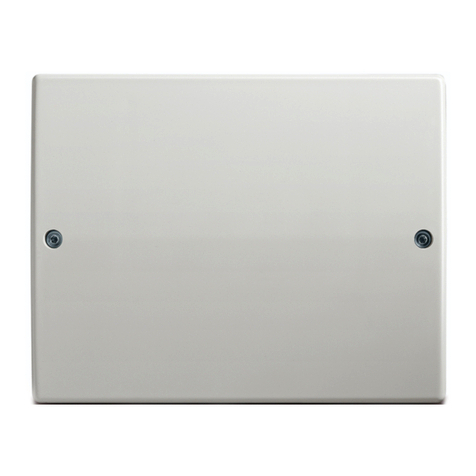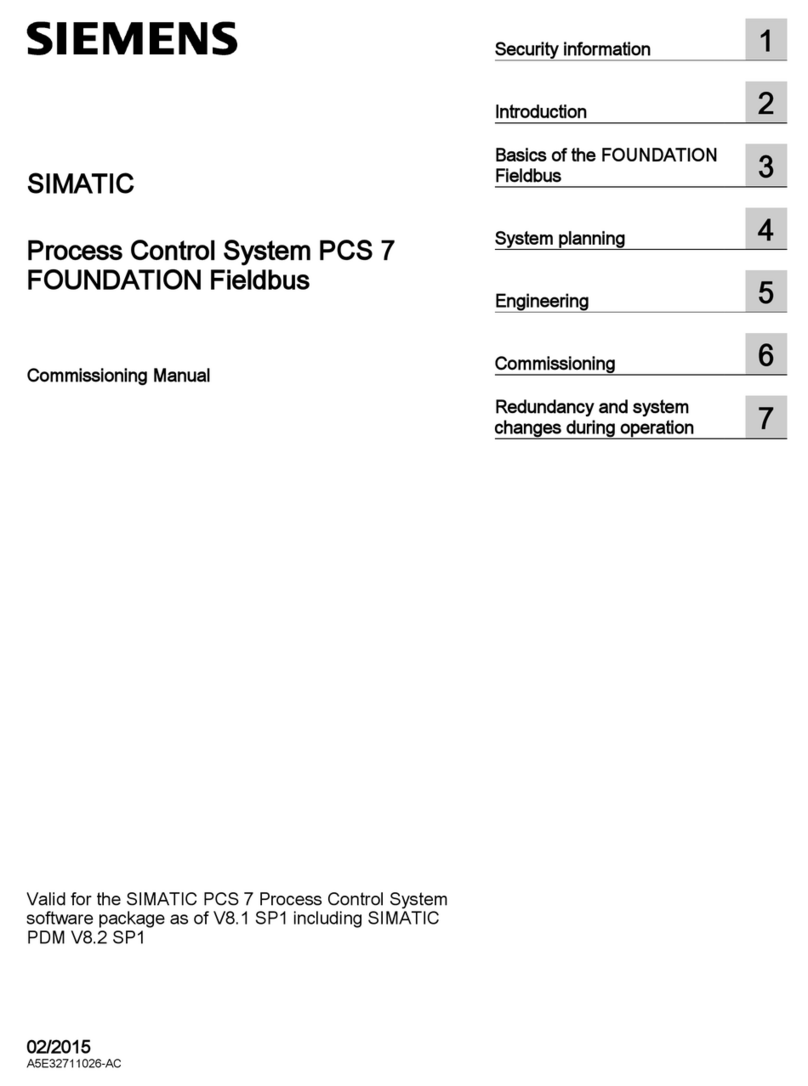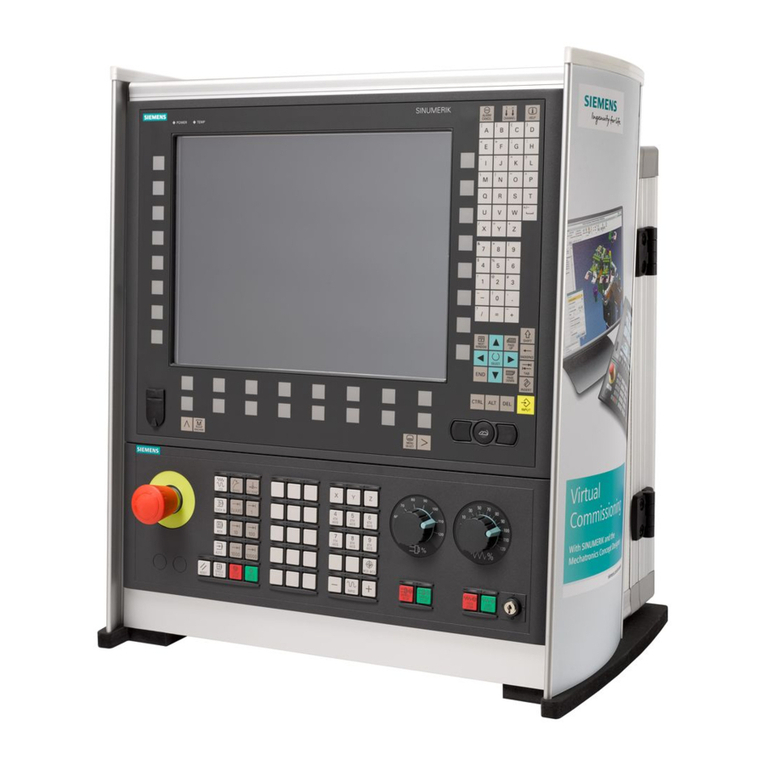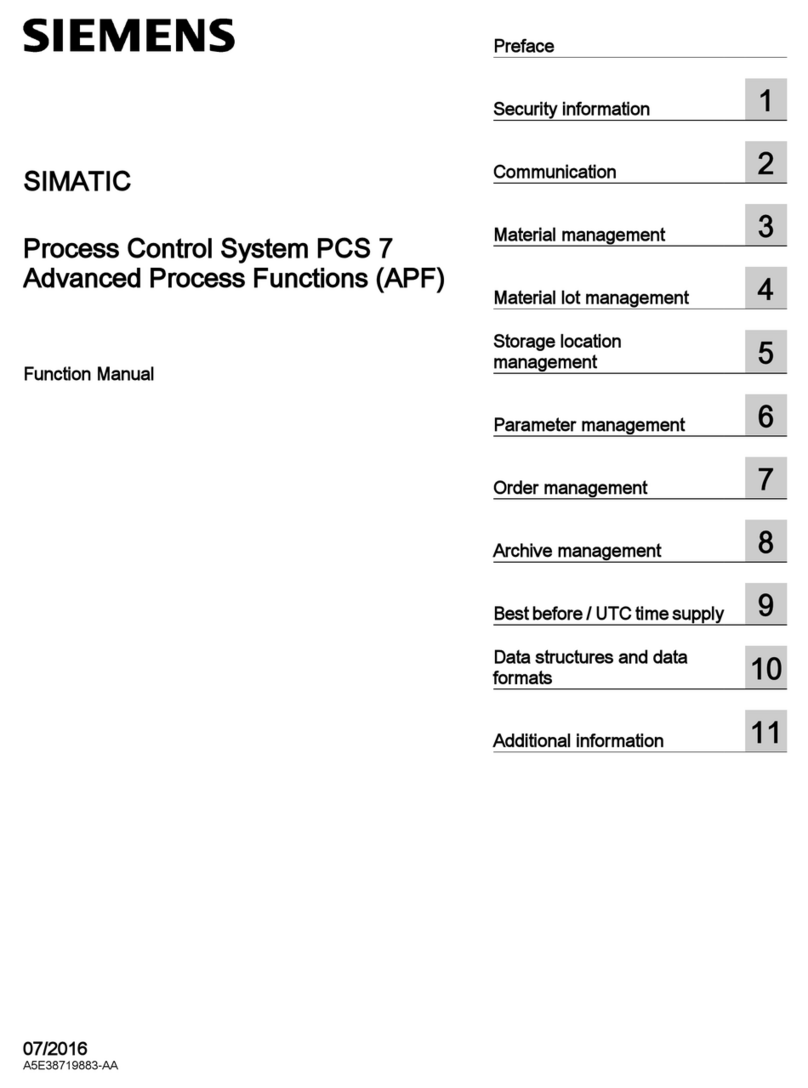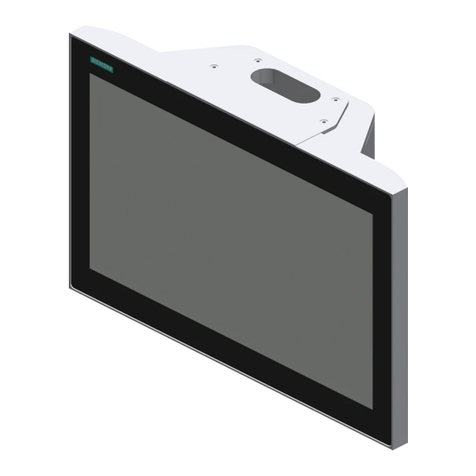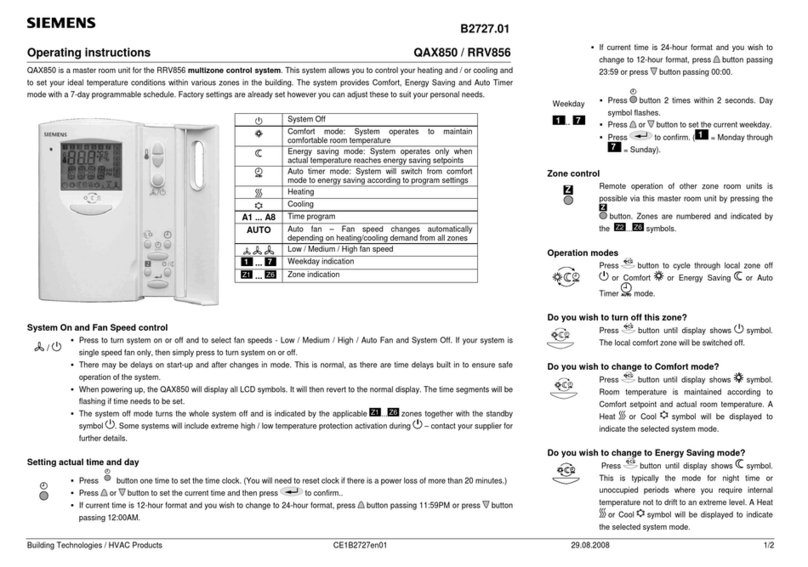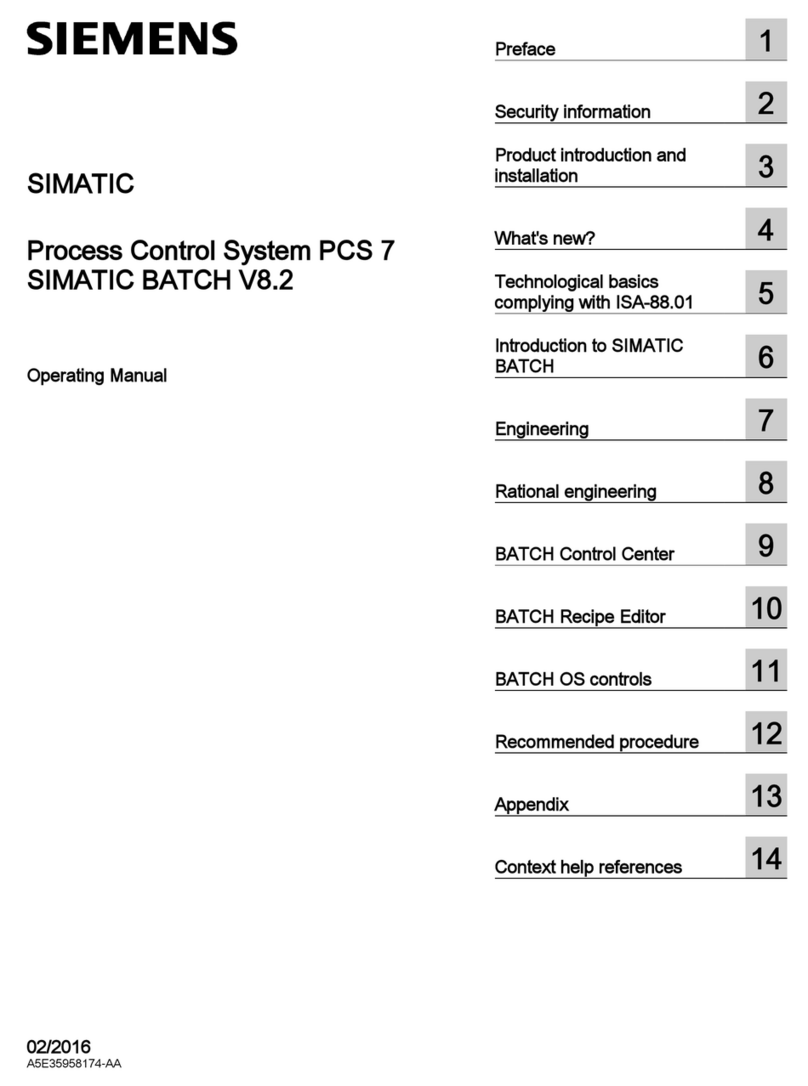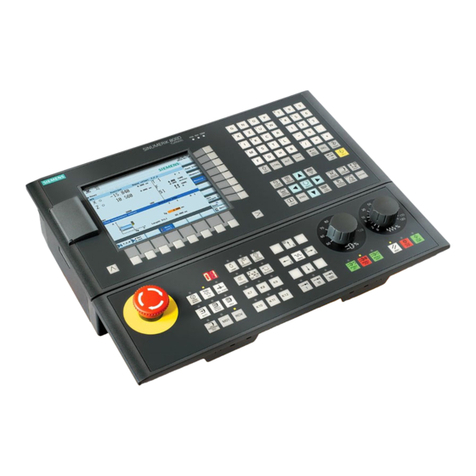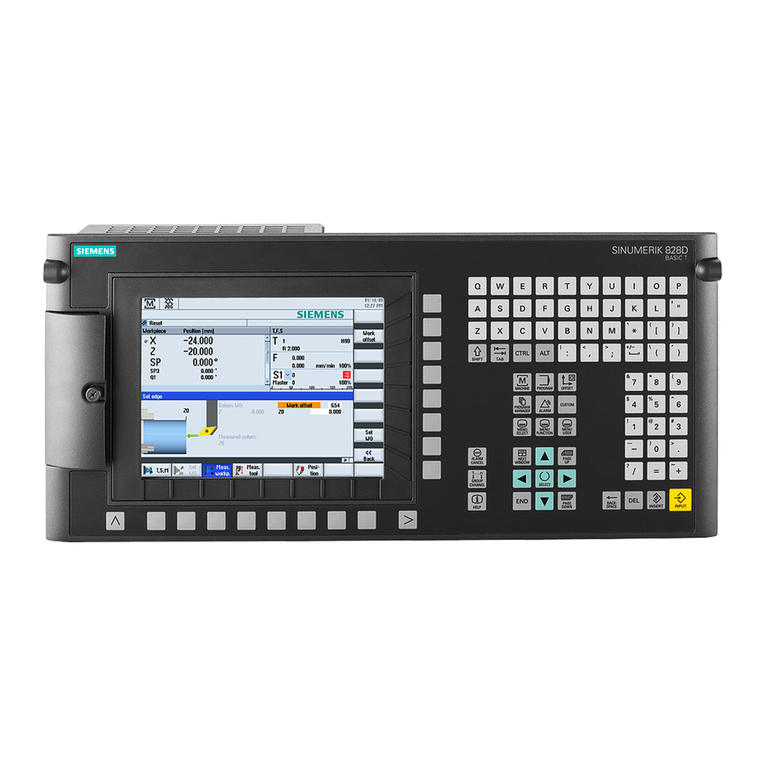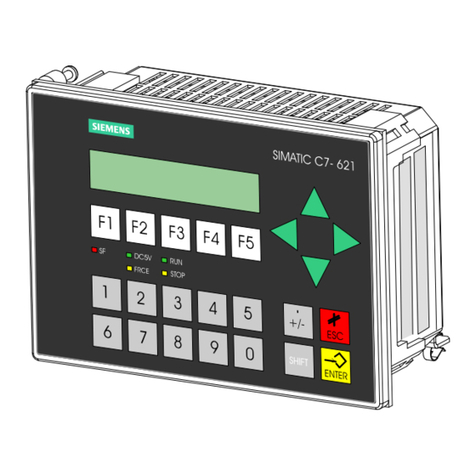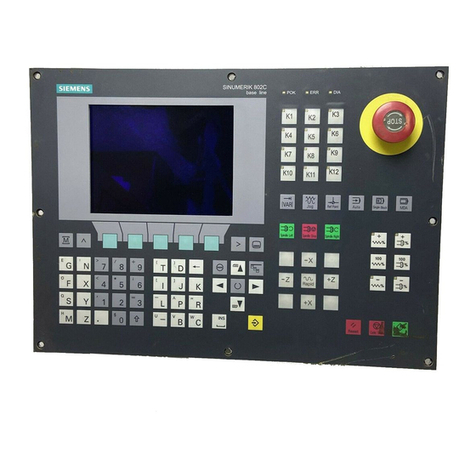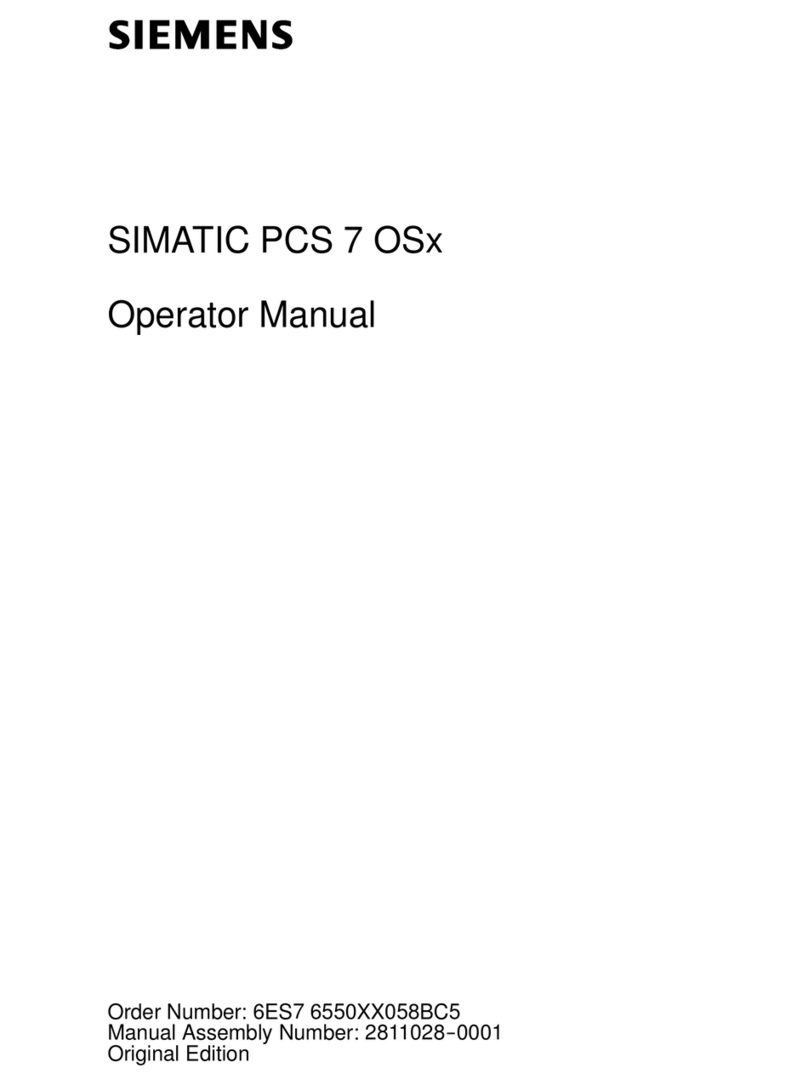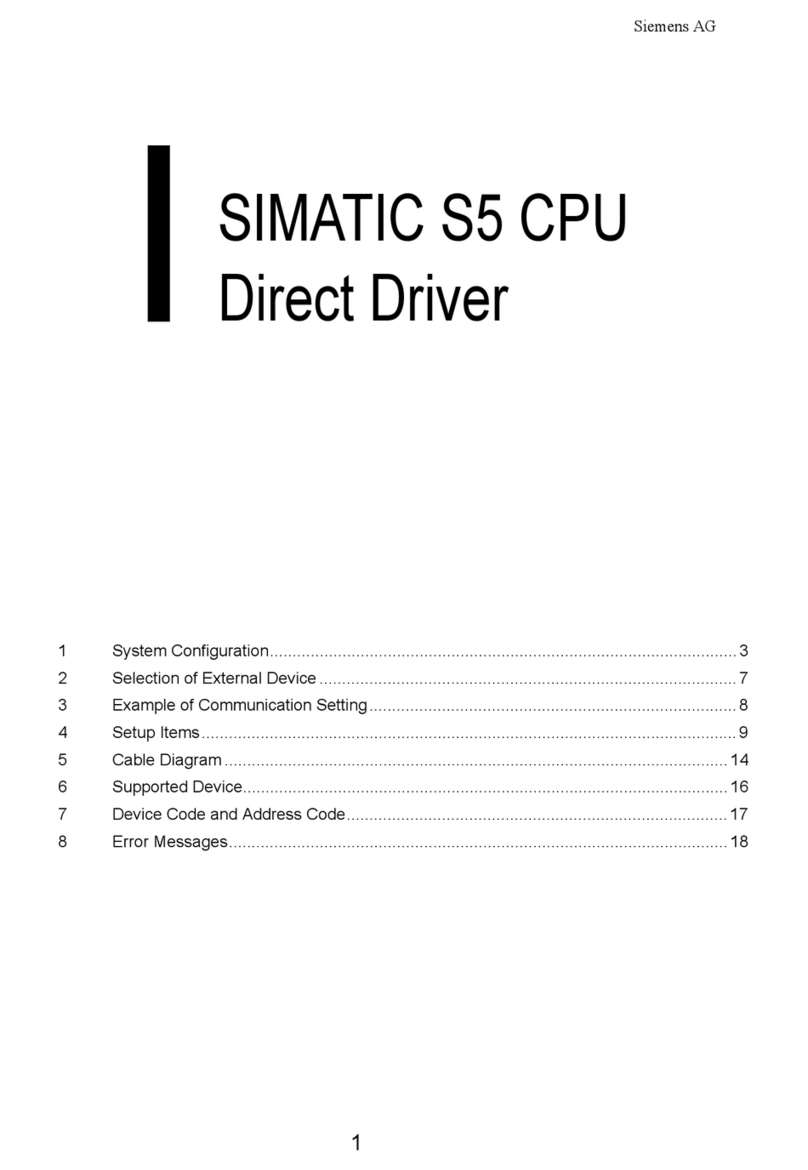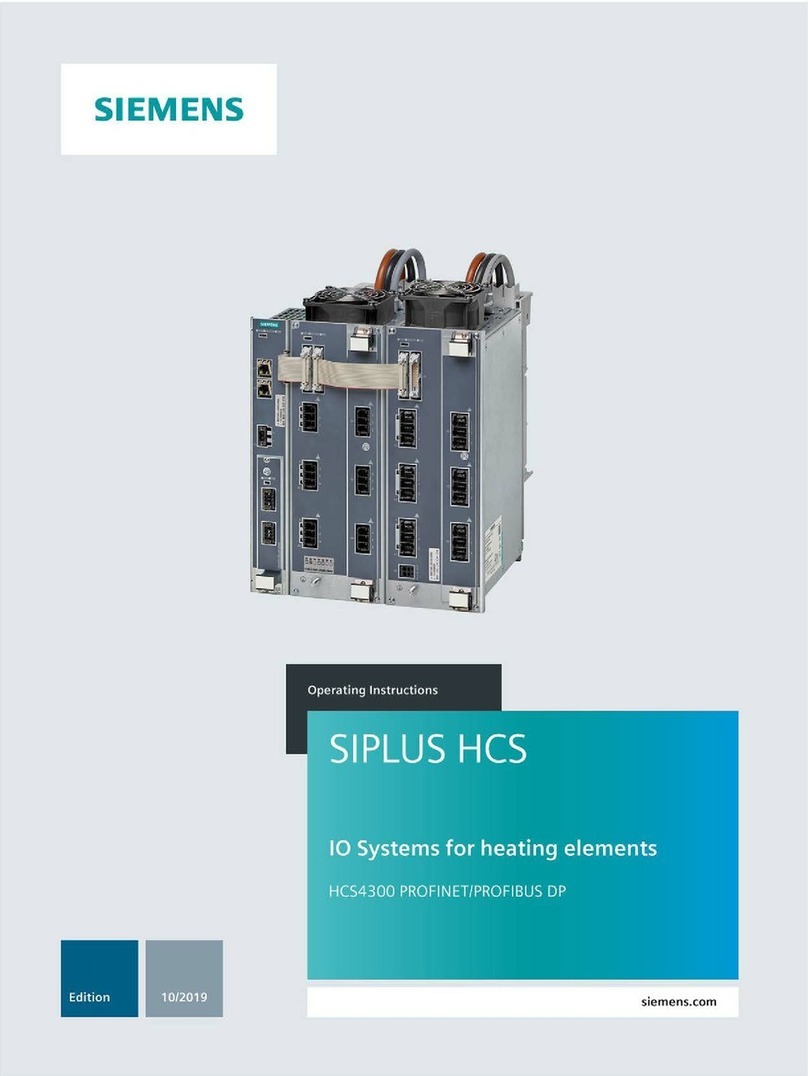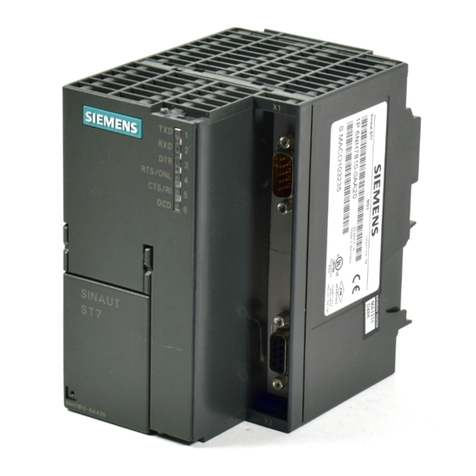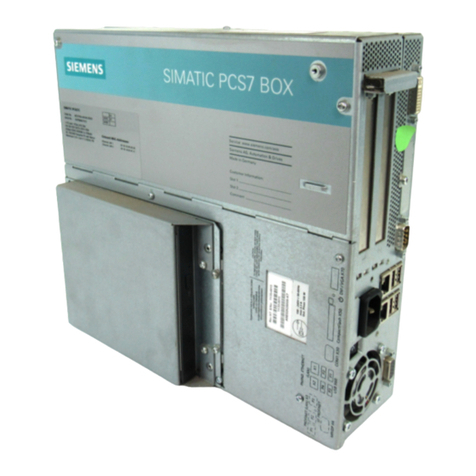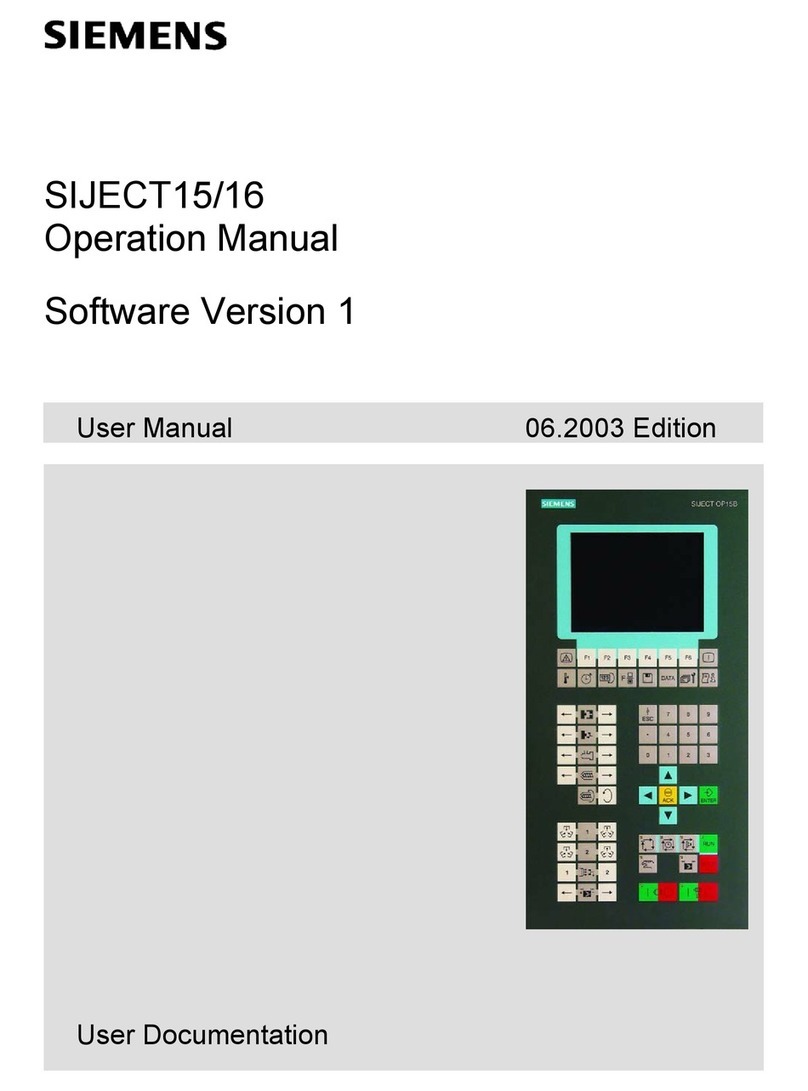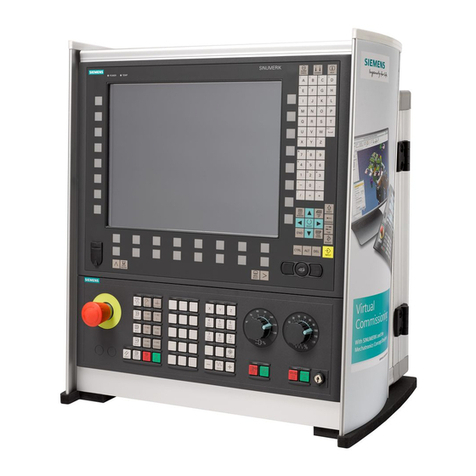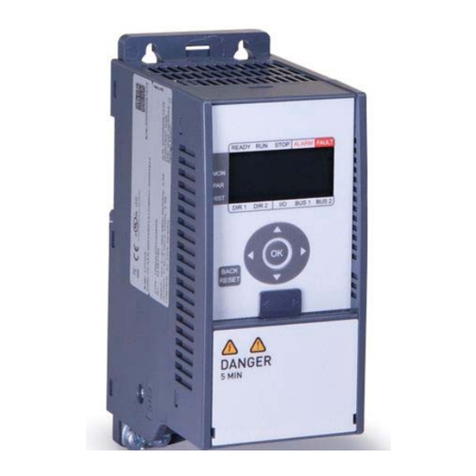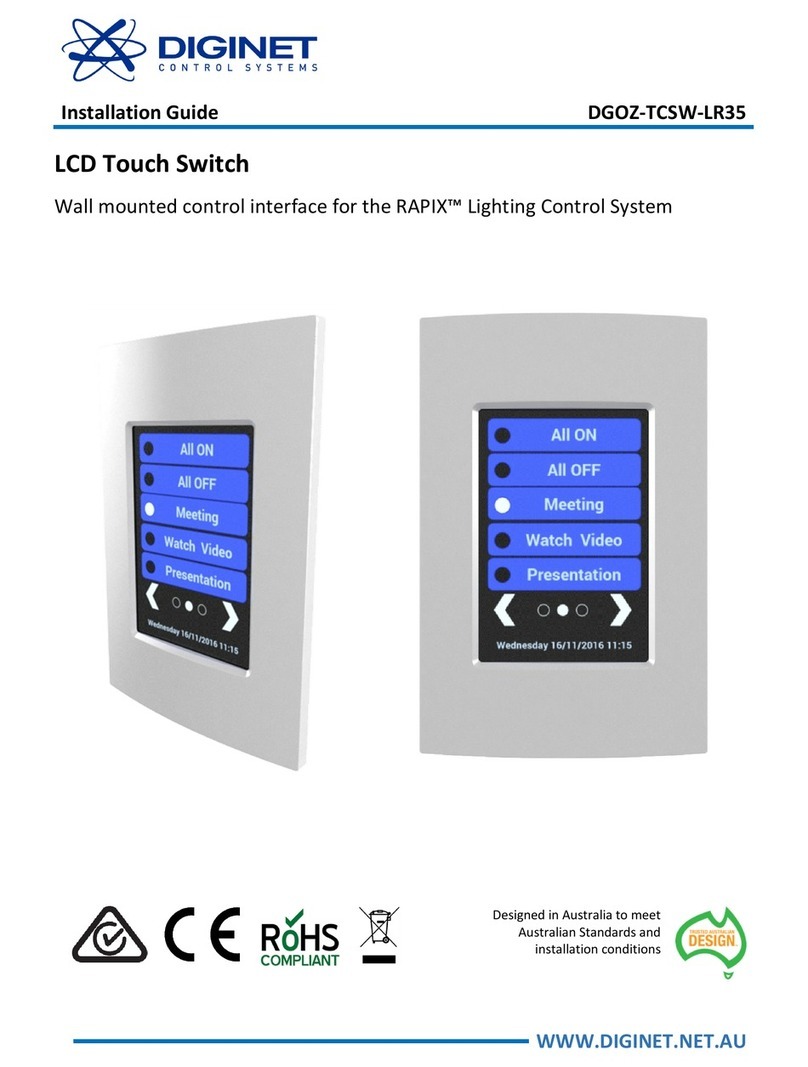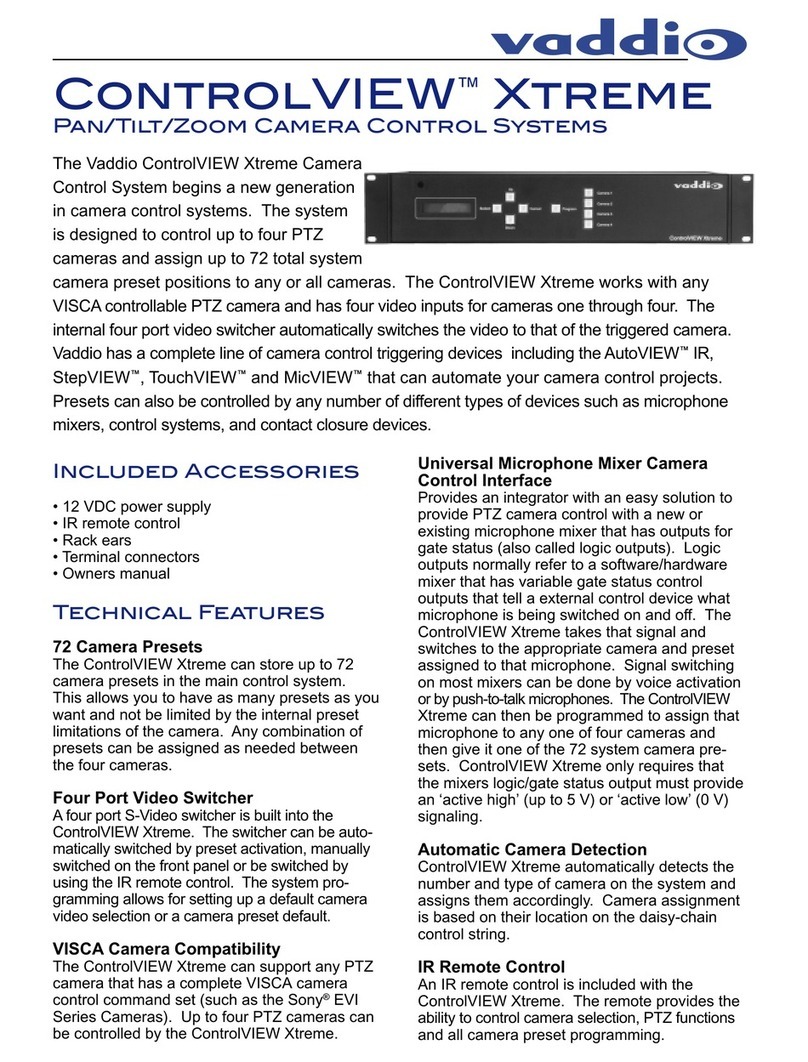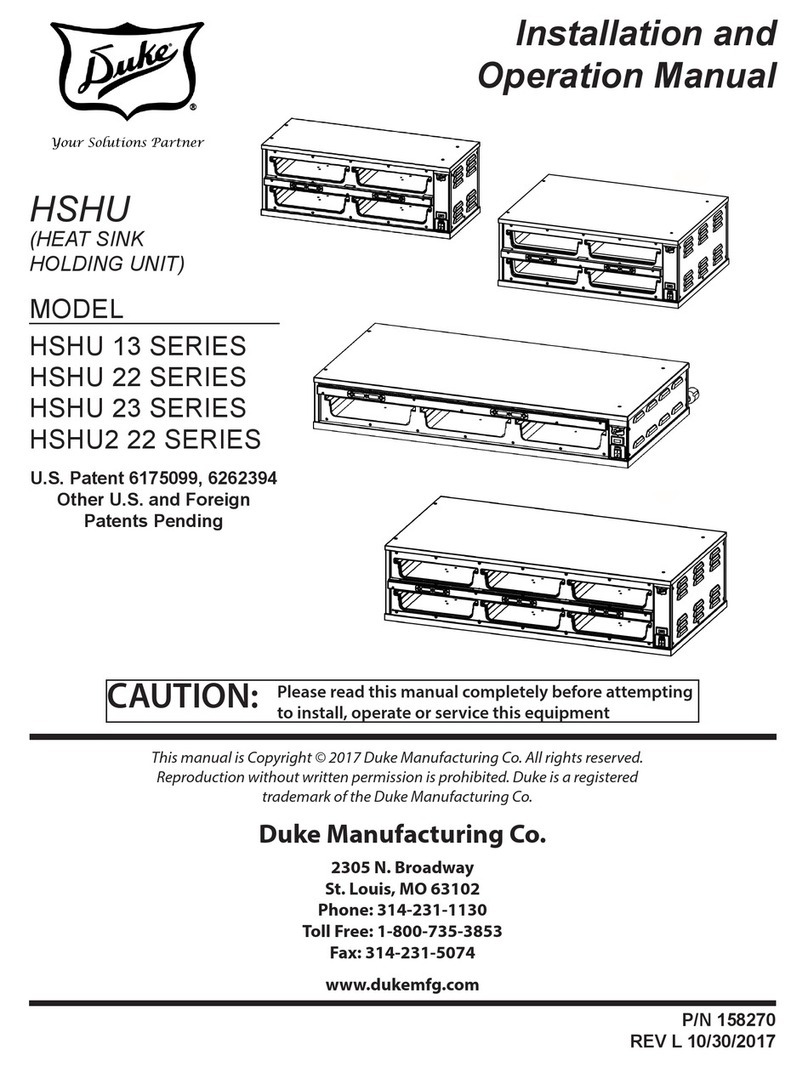
5/29
Building Technologies Division CC1N7550en
22.05.2017
Mechanical design
The following components are integrated in the LMV5:
Burner control with gas valve proving system
Electronic fuel-air ratio control for:
- A maximum of 4 actuators for LMV50 / LMV51
- A maximum of 6 actuators for LMV52
Optional PID temperature or pressure controller (boiler controller / load controller)
Optional VSD module
Example:
Dual-fuel burner
- Gas: Modulating
- Oil: 2-stage
The system components (AZL5, actuators, O2 module, etc.) are interconnected via a
bus system. Communication between the bus users takes place via a safety-related,
system-bound data bus (for safety reasons, integration of the bus into external CAN
bus systems is not possible). All safety-related digital outputs of the system are
permanently monitored via a contact feedback network. For flame supervision in
connection with the LMV5 and continuous operation, the infrared flame detector type
QRI / flame detector QRA7 or an ionization probe can be used, for intermittent
operation, optical flame detectors QRB / QRA2 / QRA4 / QRA10 with AGQ1 (AC 230
V).
The LMV5 is operated and programmed with the help of the AZL5 or a PC software.
The AZL5 with LCD clear text and menu-driven operation affords straightforward
operation and targeted diagnostics. For making diagnostics, the LCD shows the
operating states, the type of fault and the point in time the fault occurred. The
parameter setting levels for the burner / boiler manufacturer and heating engineer are
password-protected to prevent unauthorized access.
Basic settings that the plant operator can make on site do not require a password. Also,
the AZL5 is used as an interface for superposed systems such as a building automation
and control system (BACS), or for a PC using the ACS450 software. Among other
features, the unit affords convenient readout of settings and operating states,
parameterization of the LMV5, and trend recording. When replacing the LMV5, all
parameters can be saved in a backup memory of the AZL5 to be loaded back into the
LMV5.
This means that reprogramming is not required.

